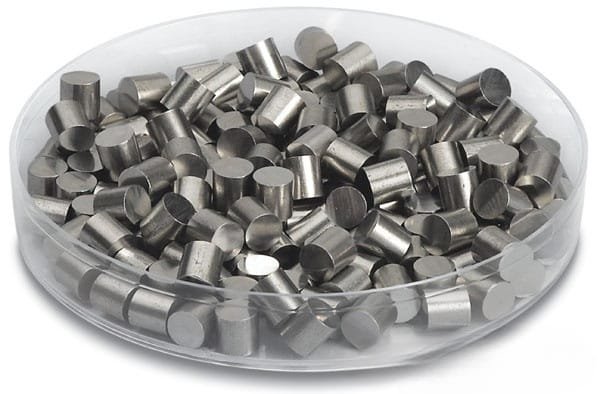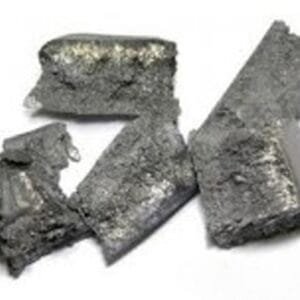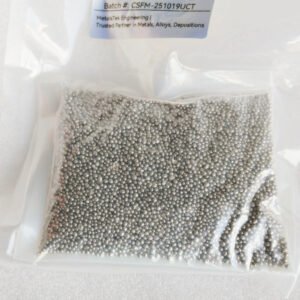Iridium Evaporation Materials Description
High-purity evaporation materials are essential for achieving optimal results in deposition processes, leading to the creation of high-quality deposited films. TFM specializes in manufacturing iridium evaporation materials with purity levels up to 99.99%, employing stringent quality assurance procedures to ensure the reliability and performance of our products.

Iridium Evaporation Materials Specification
| Material Type | Iridium |
| Symbol | Ir |
| Atomic Weight | 192.217 |
| Atomic Number | 77 |
| Color/Appearance | Silvery White, Metallic |
| Melting Point | 2,410°C |
| Theoretical Density | 22.42 g/cc |
| Synonyms | Ir Pellets, Ir Pieces, Ir Evaporation Pellet, Iridium Pellets, Iridium Pieces, Iridium Evaporation Pellet |
Iridium Evaporation Materials Application
Iridium Evaporation Materials Packaging
We take great care in handling our iridium evaporation materials to avoid any damage during storage and transportation, ensuring that the quality and original condition of our products are preserved.
Ordering Table
| Material | UnitWeight | Purity | Part Number |
| Iridium | 25g | 99.9% | EVMIR3036A |
| Iridium | 50g | 99.9% | EVMIR3036B |
| Iridium | 75g | 99.9% | EVMIR3036C |
| Iridium | 100g | 99.9% | EVMIR3036D |
| Iridium | 200g | 99.9% | EVMIR3036H |


 MSDS File
MSDS File



Reviews
There are no reviews yet.